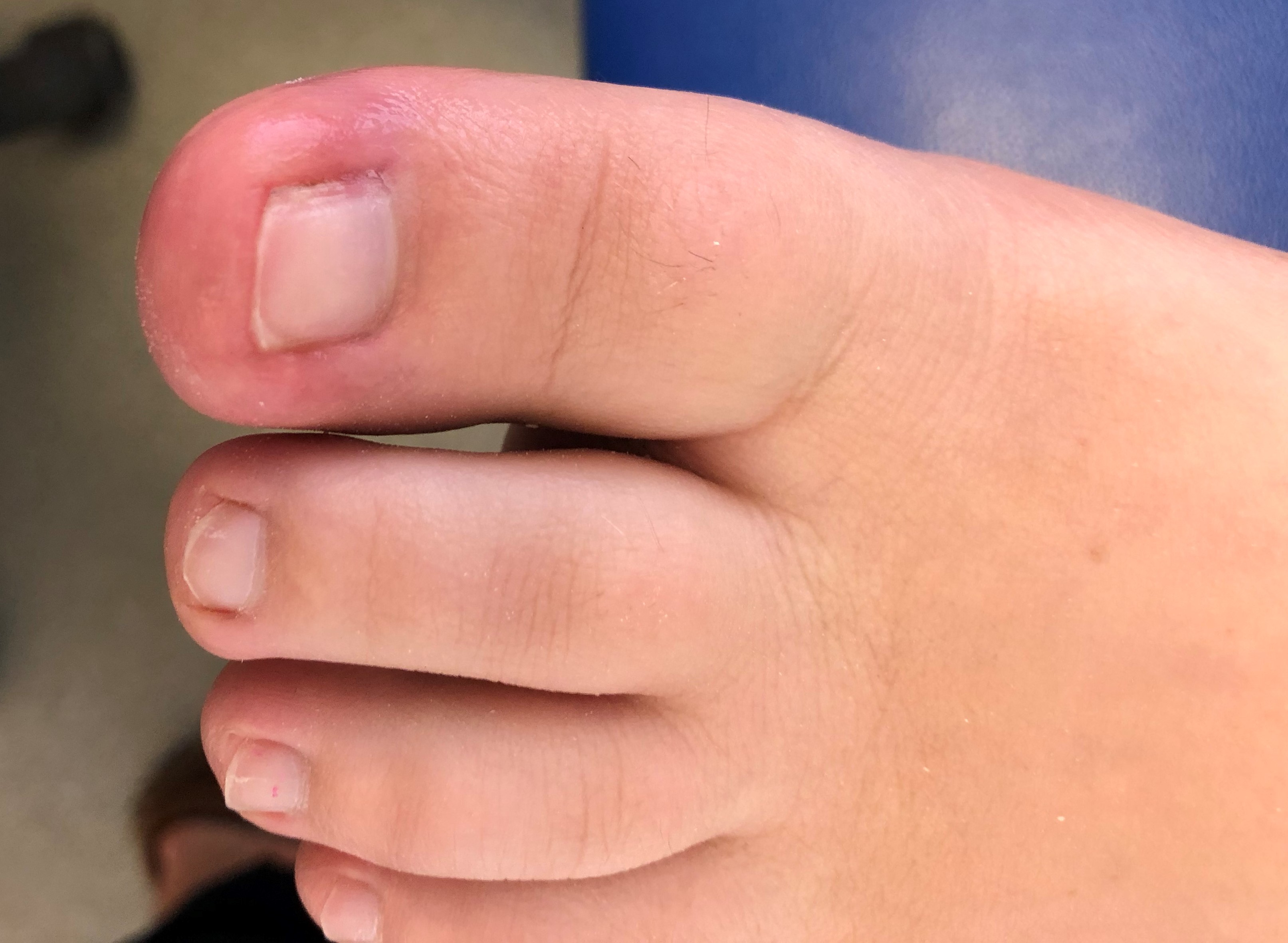Ingrown Toenails
At the Sussex Foot Centre, we treat ingrown toenails on a daily basis. An ingrown nail is a nail that curves into the skin. The medical term is onychocryptosis. It may or may not be painful, and may or may not cause infection. An ingrown nail that causes infection or inflammation is called paronychia. Ingrown toenails that cause inflammation or infection are usually very painful.
Causes:
- Trauma or any damage to the nail or the nail bed can result in ingrown nails.
- Microtrauma: Repetitive pressure from shoes. Runners, tennis, rugby and football players commonly have ingrown toenails.
- Blunt trauma: dropping something on your toe or kicking a chair.
- Shoes: Especially narrow shoes which are too small, place pressure on the big toenail, resulting in repetitive microtrauma.
- Fungal Nails: causes changes in shape of the nail and the nail bed, sometimes resulting in ingrown toenails.
- Genetics: some people are born with nails which naturally turn in at the sides and typically develop ingrown nails very early in life.
Treatment:
Conservative Care vs. Nail Surgery
Conservative approaches to therapy are appropriate for the initial management of ingrown toenails. This includes chiropody to try and take the pressure off the side of the skin by cutting down the side of the nail in a controlled way by your Podiatrist. When conservative therapy fails for the initial management of ingrown toenails, surgical treatment may be appropriate.
Nail Surgery (Please see the right-hand side of the page for our video of a recent surgery).
When is Ingrowing Toenail Treatment Necessary?
- Failure of conservative care to resolve the condition
- Recurring ingrowing nails
- Painful involuted nails (i.e. chronic curled-in nails).
- Infected in-growing nails
- Deformed nail shape
- Thickened fungal nails which can cause pressure on the toe
What do we do on the day of the procedure?
- The procedure entails local anaesthetic being put either side of the big toe to make the toe go numb, so you won’t be able to feel a thing
- The toe is then washed and an antiseptic is applied all over the area to minimise the risk of infection
- The procedure differs slightly depending on the nail pathology, however, it usually involves removing part of, or all of the nail
- Once the offending nail is removed, a chemical called phenol is applied; this is what stops the nail from growing back and causing problems again
- The nail is then dressed with a bulky dressing to prevent any further trauma and to minimise the risk of infection
- We get you back the following day to redress the area
Toenail Removal Aftercare
We see you between 3-5 times after this to redress and check progress; you will be issued with all your dressings for this period and instructed on how to redress them yourself. Usually, healing time is 3-6 weeks but some nails can take longer
Key Points
- No skin is cut at all.
- There will be NO regrowth of the nail.
- Patients can go back to work the next day or even on the same day, depending on occupation

How Can We Help?
Follow the form below to get through directly to one of our Podiatrists at the practice or to request an appointment.
Or call — 01444 453874
"*" indicates required fields
